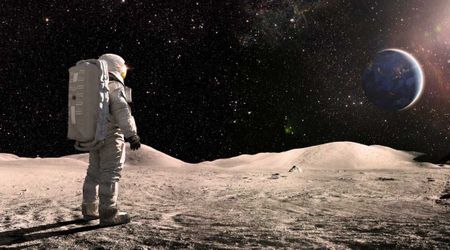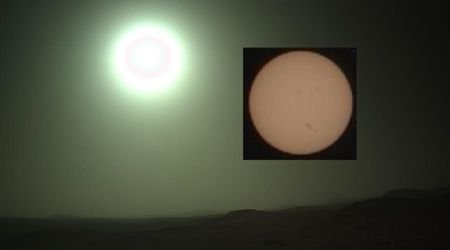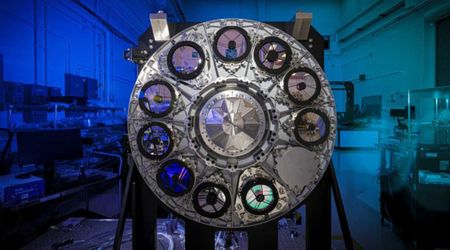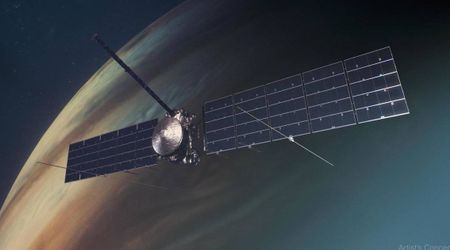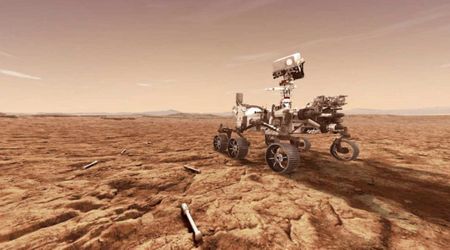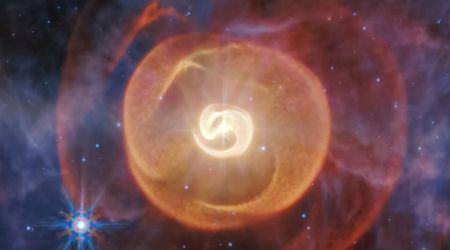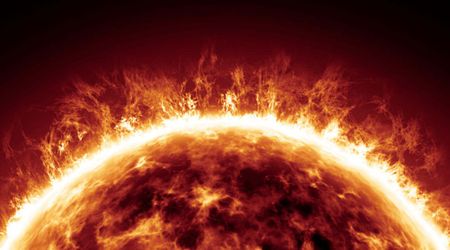Which planets can you see without a telescope?


The planets have been observed and studied for thousands of years. After the Sun, they are the most prominent space objects in our solar system. Ever since their discovery, planets have been one of the most popular observing targets for thousands of amateur astronomers around the world.
Contrary to popular belief, telescopes are not always necessary to see planets in the night sky. In fact, there are two simple ways to observe the planets without a telescope. The first one is simply to observe them with the naked eye, and the second one is to use a small pair of stargazing binoculars.
Out of the 8 planets in our solar system, 5 of them can be seen without a telescope at night. Among them are 3 rocky planets (Mercury, Venus and Mars) and 2 gas giants (Jupiter and Saturn). In this article, I will discuss each of these "naked eye planets" in more detail and provide some tips on the best times to observe them in the night sky.
Can you see Mercury from Earth without a telescope?
It’s possible to see Mercury without a telescope, but it’s not easy. Because the planet is so close to the sun, it can be rather difficult to see it from Earth. To the naked eye, it looks like a small, bright dot in the sky. I will be honest with you, Mercury is not the most impressive sight in the night sky. But if you take a minute to appreciate the fact that you can get a glimpse of this scorched world with your own eyes, it's still worth it!
When can you see Mercury at night without a telescope?
To the naked eye, Mercury is best seen when it is very close to the horizon and the sky is very clear. Since the planet closely follows the Sun, the window of opportunity to observe Mercury is rather small (a few hours), so be sure to plan accordingly!
Can you see Venus from Earth without a telescope?
Yes, you can see Venus from Earth without a telescope. Venus is the brightest object in the sky after the sun and moon. It is often called the "morning star" or "evening star." Venus is the second planet from the sun and is about the size of Earth. Just like the Moon, Venus goes through phases, which means that it sometimes looks like a crescent and sometimes looks like a full disk. The phases can only be observed with a decent-sized telescope tho. Venus is usually too bright to be seen with the naked eye during the day, it is better to wait until the sky darkens.
When can you see Venus at night without a telescope?
Depending on the time of year, you can see Venus in the morning before sunrise or in the evening after sunset. In the northern hemisphere, Venus is most visible in the evening during the first part of the year. Later on, it becomes a “morning star” (meaning it will rise at dawn shortly before the Sun).

Venus best observed during the early evenings after the Sun has set on the horizon.
Can you see Mars from Earth without a telescope?
Mars is one of the five planets that you can see from Earth without a telescope. To the naked eye, Mars will look like a bright red dot in the night sky. Mars is a popular target for amateur astronomers because it can be easily seen from anywhere in the world, as long as you have a clear view of the night sky. Seeing the red planet is quite often the reason why people get interested in astronomy and eventually become amateur astronomers. If you're lucky enough to catch a glimpse of Mars with your own eyes, be sure to take a moment to appreciate our celestial neighbor!
When can you see Mars at night without a telescope?
If you want to see Mars with your naked eye, it's always best to try and find a location where there is not a lot of light pollution. Mars is usually at its brightest when it's closest to Earth, and that happens once every two years on average. The best time to view it is usually around midnight. Make sure to keep an eye on the weather, as cloudy skies can obstruct your view. If you are lucky enough to have a telescope, you will be able to see surface features such as the polar ice caps!

Without a telescope, Mars looks like a star with a reddish tint in the night sky.
Can you see Jupiter from Earth without a telescope?
Yes, you can see Jupiter from Earth without a telescope. Jupiter is the fifth planet from the sun and can be seen with the naked eye if you know where to look. It will look like faint light in the sky and you will need to know where to look. Thankfully, many free stargazing apps can help you locate Jupiter.
However, once a year, Jupiter is at opposition (which means it is closest to us) and becomes one of the brightest objects in the night sky for a few weeks. During this time, it is very easy to spot Jupiter with the naked eye, and you might even be able to view the 4 Galilean moons with a pair of binoculars.
When can you see Jupiter at night without a telescope?
The best time to observe Jupiter is typically in the early evening when it is high in the sky. There are several times throughout the year when Jupiter is especially well placed in the sky for observation, but the very best time to see is when it is at opposition. At opposition, Jupiter is directly opposite the sun in the sky and it is at its brightest. This year, Jupiter will be at opposition in September.
Can you see Saturn from Earth without a telescope?
Yes, you can see Saturn from Earth without a telescope. Saturn is the sixth planet from the sun and the second gas giant that you can admire with the naked eye. Saturn is my favorite planet to observe!
It is a bit dimmer than Jupiter, but it is still one of the most impressive sights in the night sky. If you are lucky enough to live in an area with little light pollution, you will be able to spot the ringed planet without any optical assistance at all. However, even a small pair of binoculars should be able to resolve the planet's infamous ring! For many amateur astronomers, Saturn is the first planet that they ever see with their own eyes. So if you are looking for an easy celestial target to observe, be sure to look for Saturn when the night sky is clear.
When can you see Saturn at night without a telescope?
Saturn is visible most of the year. The best time to observe Saturn this year will be in August. At this time, the ringed planet will be at its brightest and will be visible throughout most of the night.
Can you see Uranus from Earth without a telescope?
Uranus is one of the furthest planets from Earth, and it is not possible to observe it without a telescope. Even with a telescope or binoculars, it can be difficult to see because it is very faint. Uranus is about 1.8 billion miles (2.9 billion kilometers) from Earth, and it is only visible as a tiny blue dot in the night sky. This planet is notoriously hard to observe, and even the most experienced stargazer would find it challenging to see Uranus with a telescope.
Can you see Neptune from Earth without a telescope?
The answer to this question is no, you can not see Neptune from Earth without a telescope or binoculars. Neptune is the eighth and outermost planet in the solar system, and it is only visible with a powerful telescope. At the very least, you will need a pair of astronomical binoculars with a large aperture and a high magnification: this will allow you to distinguish a very small point of light with a blue-green tint.
Can you see Pluto from Earth without a telescope?
It is impossible to observe Pluto at night without a telescope or a pair of binoculars. The planet is located too far away from Earth and is too small to be seen without a high-end telescope that costs tens of thousands of dollars. Even with a powerful telescope, Pluto is only visible as a faint speck of light in the night sky. For amateur astronomers who are not equipped with a high-end telescope, Pluto will continue to be an unattainable sight for the foreseeable future.
Conclusion
In conclusion, observing the planets in the night sky can be a fun and educational experience. You do not necessarily need the newest telescope to do so; in fact, all you need is a clear night sky and some patience. By learning about the planets and their movements, you can become a more knowledgeable stargazer. With a little practice, you will be able to instinctively spot the planets with your naked eyes in no time. So get outside and enjoy the wonderful views!
Frequently Asked Questions
How many planets can you see without a telescope?
On a clear night, there are 5 planets that you can see without a telescope. These five planets are called the naked-eye planets: Mercury, Venus, Mars, Jupiter, and Saturn.
How to identify planets in the night sky
Planets can be identified in the night sky by their movement across the stars. They also differ in brightness, size and color. Unlike stars, planets do not twinkle much, which makes them easier to identify. Finally, there are many useful mobile applications available to help you identify them quickly.
Why are planets hard to see without a telescope?
Planets can easily be seen without a telescope but you won’t be able to see much more than a simple point of light. Telescopes can collect more light than the human eye can, so planets can be seen more clearly with an optical instrument. Telescopes allow you to see things that are not visible to the naked eye, such as Mars’ surface features, Saturn’s ring or Jupiter’s great red spot.



